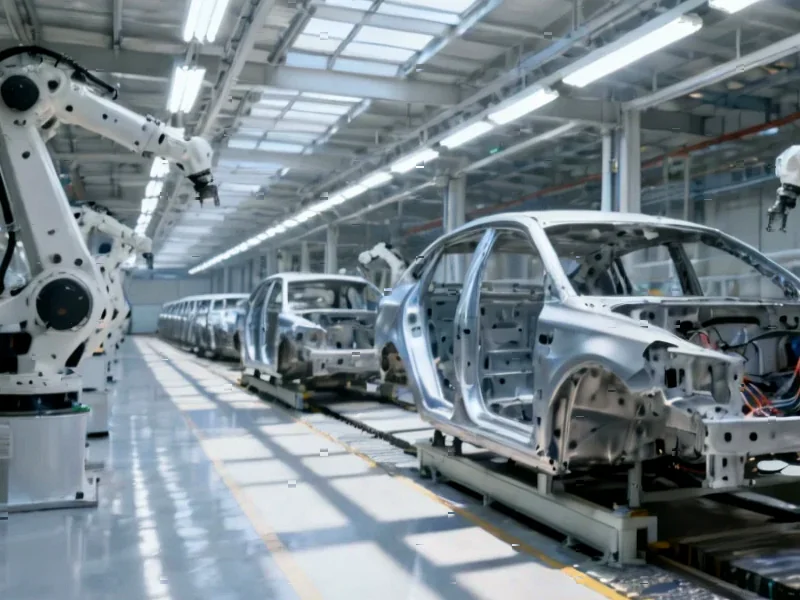According to Business Insider, BYD reported a 12% year-over-year decline in global sales for October, marking its second consecutive monthly drop. The company’s profits fell by approximately one-third year-over-year, and its stock price has plunged around 36% since hitting a record in May. Meanwhile, competitors including Geely, Xpeng, and Nio all reported record October sales, with Geely’s low-cost Galaxy brand selling over one million vehicles in China this year, including the Xingyuan compact EV priced at $9,250 that directly competes with BYD’s Seagull. BYD’s overseas sales surged 169% last month, with Citi analyst Jeff Chung estimating the company will export nearly one million EVs this year, while Morgan Stanley analysts noted overseas sales could compensate for domestic struggles. This competitive pressure reflects broader market dynamics that demand deeper analysis.
The Inevitable Market Consolidation
What we’re witnessing is the natural maturation of an overheated market. When BYD executive Stella Li predicts fewer than 20 carmakers will survive the coming “consolidation bloodbath,” she’s describing a classic industry lifecycle pattern. China currently hosts over 100 EV manufacturers fighting for market share in a space that simply cannot sustain that level of competition. The government’s crackdown on excessive discounting indicates regulatory concern about unsustainable pricing wars that could destabilize the entire sector. This consolidation phase will separate companies with genuine technological advantages and sustainable business models from those that simply rode the initial wave of EV enthusiasm and government subsidies.
Where BYD Faces Maximum Pressure
The competitive landscape has shifted dramatically in just the past year. BYD’s traditional strength in affordable vehicles now faces direct challenges from multiple angles. Geely’s Galaxy brand, particularly the Xingyuan at $9,250, represents a formidable threat in the budget segment where BYD previously dominated. Meanwhile, premium competitors like Nio and technology-focused players like Xpeng are capturing the higher-margin segments. Even Tesla has maintained surprisingly resilient sales of 71,000 vehicles in China during September, according to industry data, showing that international brands can still compete effectively despite the home-field advantage of Chinese manufacturers.
The Overseas Lifeline
BYD’s international expansion represents perhaps the most strategic pivot in the company’s history. The 169% surge in overseas sales isn’t just a temporary boost—it’s the foundation of BYD’s survival strategy. With factories underway in Hungary and Turkey, plus plans for 1,000 new European stores next year, BYD is executing a textbook geographic diversification play. The European market presents particularly attractive margins compared to China’s hyper-competitive landscape, as Morgan Stanley analysts correctly noted. However, this expansion comes with significant challenges, including navigating complex regulatory environments, establishing brand recognition in mature markets, and adapting vehicles to different consumer preferences and infrastructure requirements.
Stakeholder Impact Analysis
Consumers stand to benefit from this intensified competition through better technology and more attractive pricing, but the coming consolidation will inevitably reduce choice in the long term. Suppliers face significant uncertainty as they must choose which manufacturers to support during the shakeout period. Investors need to distinguish between temporary setbacks and fundamental business model weaknesses—BYD’s 36% stock decline since May may represent a buying opportunity if the company successfully executes its overseas strategy, or it could signal deeper problems. Employees across the industry face job insecurity as weaker players inevitably merge or fail. The Chinese government must balance its desire for a strong domestic EV industry against the market realities of overcapacity and unsustainable competition.
Broader Industry Implications
The Chinese EV market’s maturation has global ramifications. As companies like Leapmotor and Geely strengthen domestically, they’ll inevitably look overseas for growth, increasing competitive pressure on established automakers in Europe and emerging markets. The technology developed during China’s EV boom—particularly in battery efficiency and cost reduction—will become globally available as surviving companies seek to monetize their R&D investments. For traditional automakers watching from Europe and North America, the Chinese market provides both a cautionary tale about the dangers of overcapacity and a showcase of the rapid innovation possible in a highly competitive environment.
Paths to Survival in a Crowded Market
The companies most likely to survive China’s EV consolidation will share several characteristics: strong technological differentiation in areas like battery technology or autonomous driving, efficient manufacturing capabilities that enable competitive pricing without sacrificing margins, and successful international expansion strategies. BYD’s current challenges, while significant, may ultimately strengthen the company by forcing discipline and strategic focus. The coming year will separate the truly resilient businesses from those that expanded too rapidly during the market’s growth phase without building sustainable competitive advantages.




